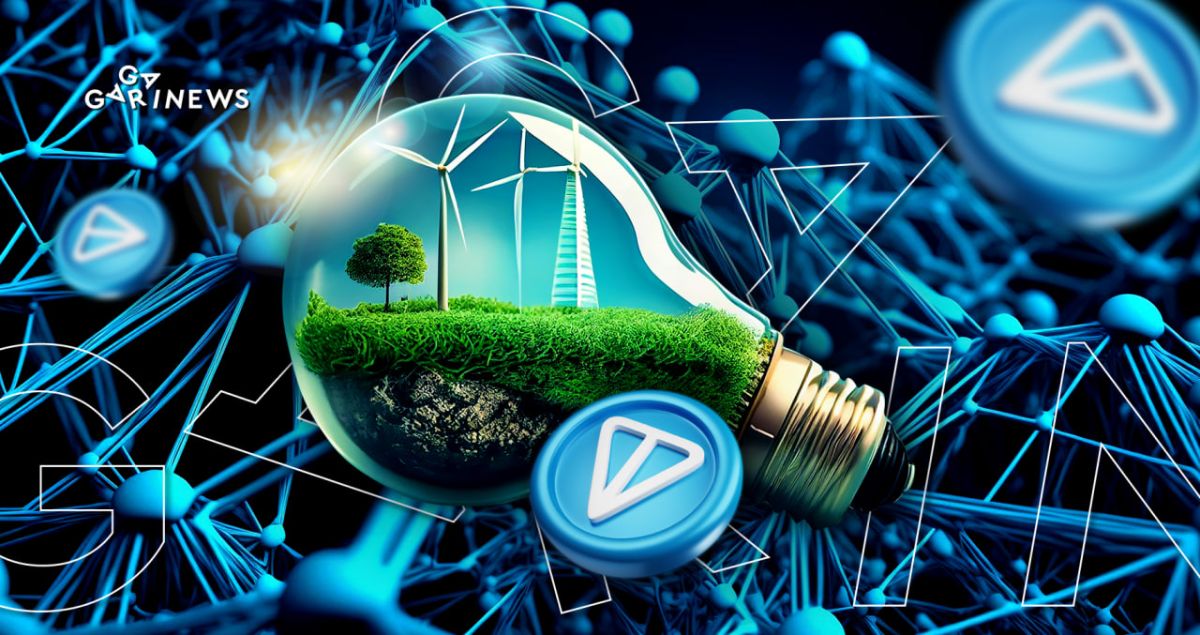The game-changing TON and the Open Network Overview

Discover Toncoin, the native token of The Open Network (TON), a decentralized Layer 1 blockchain. Toncoin is an eco-friendly token designed for payments, fees, and confirmation, boasting fast transactions, low fees, and a flexible architecture. This review covers information about the cryptocurrency’s origins, competitors, potential uses, development plans, and token economics.
On this page
Toncoin is the native token for the permissionless layer-1 distributed ledger technology called The Open Network (TON). Toncoin, formerly known as Gram, can be utilized for payment clearings, settlement costs, and transaction confirmation with the TON blockchain's PoS (Proof-of-Stake) consensus model.
Key token details:
- Fully diluted market cap: $3,488,495
- Total supply: 5,047,558,527.7 TON
- Max. supply: 400,000,000 TON
- Circulating supply: 1,221,401,181 TON
- Market cap: $11M
- Volume (24h): $5.66M
Besides turbocharged transactions, low fees, and a wide range of applications, the energy-efficient Open Network has a savvy and adjustable structure that can scale.
Toncoin Origins
Reports of Telegram's upcoming blockchain launch first surfaced in 2018, when the platform was known as TON. Toncoin was founded by Pavel Durov and Nikolai Durov, who had previously created the Telegram messenger.
Brief historical milestones:
- November 2019. The project launched the testnet2, activating 5b-coins minting, while a small part, namely 1.45%, was distributed between testers and developers.
- May 2020. After the SEC prohibited Telegram from distributing Grams among investor pools, the project's creators made the decision to halt the TON ecosystem development.
- May 2021. The platform held a vote among network participants, and most testnet2 votes backed the transition to a higher mainnet level. In the meantime, the Proof-of-Work Giver approach has continued to distribute coins among network members.
Since 2021, the project has been concentrating on enhancing the network's security and resilience by increasing the number of validators and coins necessary for verification. This approach aims to create a more secure and decentralized network that can better withstand potential attacks or threats.
Proof-of-Stake (PoS) as a validation algorithm for the TON
Toncoin employs PoS to attest transactions within the network and dividend validators. The Open Network concept has yet to bypass the nominators, who can reward validators for sharing tokens. This approach led to impressive results:
- Validator share to maintain the blockchain reached: 217 168 292
- The upward trend in TON user accounts in the network over the past six months: +321%
The project developers pay special attention to the further safety of the network. Thus, nominators and validators can manage smart contract execution employing TVM (a.k.a. TON Virtual Machine).
Toncoin's closest competitors
Despite the many unique qualities of the coin, the project still faced severe competition from several big and well-promoted blockchain platforms. However, each of them has strengths and weaknesses that open up broad prospects for TON:
- Ethereum. It is the second-largest cryptocurrency by market cap and one of the most established smart contract platforms. Despite using PoS as a validation algorithm, the network has limited upscaling and high fees, allowing Toncoin to offer more profitable solutions for the end user.
- Cardano. It is a third-generation blockchain project geared towards scalability, sustainability, and security, making it one of Toncoin's main competitors.
- Polkadot. The project enables cross-chain communication between different blockchains and guarantees regular intranet communication. The unique architecture and focus on interoperability put the project in a solid position to compete with Toncoin.
- Solana. Solana is another close competitor to Toncoin. The platform boasts low fees and high-speed transactions using PoH (Proof of History), an advanced consensus mechanism.
Meanwhile, TON is constantly improving the network ecosystem by offering universal solutions and increasing the speed of transactions. This approach enables it to withhold the highly competitive pressure from Tier-1 blockchain platforms and develop the network concept based on the declared roadmap.
Use Cases of Toncoin
Toncoin is most commonly used as a transaction handling fee on the blockchain.
Key use cases:
- Validator rewards for maintaining the blockchain
- Payments within DApps on the blockchain
- Cost for ledger shared data storage
- Fee for the usage of TON Proxy
- The expense of the TON DNS solution
- Voting in TON's on-chain governance initiatives
Besides, the TON token can also be used as payment for generating new work chains or to pay a commission for on-chain transactions between chains.
Toncoin Roadmap
The project's roadmap is a detailed description of the Toncoin platform's life cycle from launch and indicates the milestones the developers have reached or plan to achieve up to Q1 2023.
TON roadmap 2018 – 2023:
- 2018 – the project launch. The Telegram team molds the Telegram Open Network – their own layer-1 chain solution.
- 2018 marked the beginning of the project's private investment round. During this round, the founders of the project were able to secure $1.7 billion by selling TON tokens.
- 2019 – Telegram launched two TON testnets in Q1 and Q4 of 2019. The first testnet materialized in the spring of 2019, and users witnessed open-source code. The next testnet2 was successfully launched on November 15, 2019.
- 2019 pending litigation with the US SEC, and, as a result, TON is postponed until all legal discrepancies are resolved.
- May 2020 – Telegram calls it quits on testnet2 support and TON development, acquiescing to compensate backers for their $18.5 million investment.
- 2020-2021 – The engineering team resumed active TON development based on the previously approved design defined in the original TON documentation.
- May 2021 – shift to the mainnet. While Testnet2 has shown stable performance for a long time, the network community voted for the Mainnet level-up.
- Q3 2021 – Maturation and implementation of TON-ETH and TON-BSC bridges.
- Q4 2021 – Announcement of the launch of TON subscriptions and listing on top crypto exchanges.
- Q1 2022 – Launch of the TON Developer Program, | Reward Program for TON Nominators, | TON DeFi.
- Q2 2022 TON DNS announcement and launch of TON payments.
- Q3 2022 TON Websites and TON Proxy Solutions Revealed.
- Q4 2022 – Completion of the implementation of the TON Vault solution.
- Q1 2023 – The project plans to implement: Network configuration, | x100 Stress Test | Token Bridge | Tokenomics optimization voting | TON Awards 2022, | TON Connect and Tokens Guidelines & Tools.
The current roadmap prioritizes the transformation of the blockchain into a more efficient, versatile, and secure model through the introduction of novel features and an expansion of its real-world adaptability.
TON Tokenomics
Even though TON no longer employs PoW for mining, new token pools can still be created. As of May 2023, the circulating supply of tokens was 1,221,401,181 TON coins. Conversely, the TON website indicates that the average annual inflation rate reaches 0.6%.
November 2021 was marked by a sharp spike in Toncoin price, which started at less than one dollar and jumped to $5.84. In 2021 and 2022, the price of a crypto asset pulsated in the range of $1 to $2. As of May 9, 2023, the digital asset is valued at $2.03.
The use and acceptance of TON are increasing as the number of new accounts continues to grow. As of April 2003, the number of accounts had exceeded the 2,500,000 mark. Meanwhile, the six-month upsurge in new accounts was over 321%. Currently, TON on the network boasts a listing on top crypto exchanges with a maximum supply of 5 billion TON.
The content on The Coinomist is for informational purposes only and should not be interpreted as financial advice. While we strive to provide accurate and up-to-date information, we do not guarantee the accuracy, completeness, or reliability of any content. Neither we accept liability for any errors or omissions in the information provided or for any financial losses incurred as a result of relying on this information. Actions based on this content are at your own risk. Always do your own research and consult a professional. See our Terms, Privacy Policy, and Disclaimers for more details.


























